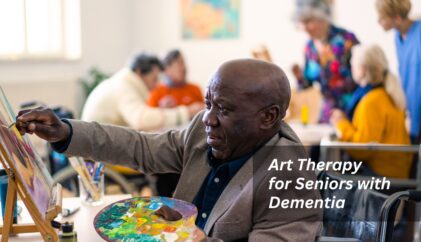
Compassion Fatigue is a combination of physical, emotional, psychological, and spiritual depletion associated with caring for others who are experiencing significant levels of emotional or physical distress.
Compassion Fatigue: The Cost of Caring
Compassion Fatigue IS NOT a diagnosis, rather, it is a descriptive term in the literature that reflects the negative effects of helping. This insidious syndrome impacts only those in the giving, caring, and helping professions who are constantly giving their heart and soul and empathy to their patients - and end up taking on some of their suffering.
Compassion Fatigue is a combination of physical, emotional, psychological, and spiritual depletion associated with caring for others who are experiencing significant levels of emotional or physical distress. It results in a decreased ability to cope with the everyday environment. When someone experiences compassion fatigue, they are in a state of emotional distress and exhaustion, coupled with biological, psychological, and social dysfunction resulting from secondary traumatic stress and burnout.
Burnout: feeling emotionally depleted or drained and results after a period of long-term, gradual, work related stress.
Secondary Traumatic Stress: the distress and emotional disruption a clinician can feel that results from contact with individuals who have directly experienced trauma. The symptoms of secondary traumatic stress usually have rapid onset, as compared to the slow build up over time that comes with burnout.
- It is important to stress that secondary traumatic stress is a separate and distinct concept from PTSD, although the signs and symptoms mimic PTSD. The distinction between the two is that instead of the trauma directly happening to the clinician, it is an indirect experience of someone else’s trauma. The firsthand trauma is that of the patient, and yet, the clinician re-experiences it as if it were their own.
The chart below lists common signs and symptoms of Compassion Fatigue. Take a moment and assess yourself - how many of these symptoms are you experiencing? Remember, there is no shame in this - these are the negative aspects of helping, the noble profession in which you excel.
If you are experiencing some of the elements listed on that chart, I strongly encourage you to take the ProQol (a tool designed to assess for compassion fatigue) within yourself.
What can we do about Compassion Fatigue?
When experiencing symptoms of compassion fatigue, it can be easy for health care professionals to blame themselves and feel shame and guilt for feeling the way that they do. I implore you - do not allow yourself to fall into this trap. These are the result of giving so much of yourself, in a profession you love. If you experience symptoms of compassion fatigue, take some steps to help yourself. The first, is identifying your compassion satisfaction level.
Compassion Satisfaction is the positive consequence of the helping behavior, the counterpart, and veritable antidote to Compassion Fatigue! Compassion satisfaction occurs when you find meaning and fulfillment in your work. It is the pleasure you derive from the care you provide in easing the suffering of others, feeling like you make a real difference with the work that you do, feeling like part of a team, or maybe even like a family with your colleagues. It is that overall good feeling resulting from the ability to assist others and make a contribution. It is the direct opposite of compassion fatigue and in fact, can protect you from burnout and secondary traumatic stress.
How to Build Compassion Satisfaction:
- Educate yourself by learning more about compassion fatigue. Individuals who receive training and education about this tend to have lower levels of compassion fatigue.
- Identify your own level of risk and monitor it – using the ProQol is a great way to do this. Watch for burnout and secondary traumatic stress symptoms.
- Compassion training focuses on strengthening resilience, building a sense of gratitude (or increasing your gratitude quotient), and being present focused rather than a future oriented perspective on how to navigate situations and regulate our own responses to the information and experiences shared by our patient. Being present is directly correlated with well being. Techniques such as mindfulness practices, journaling, meditation, prayer, song, and chanting, are all based on being present in the moment, developing awareness of yourself and your presence, and allowing compassion towards those moments. These contemplative practices help build resiliency.
- Self Preservation/Self Care
Self Preservation:
I don’t know about you, but I always recoil a little bit when I say “self care” in relation to my own needs – maybe it is because I am not great at, or because it feels selfish to focus on myself and take precious time away from my family and friends. But, it is NOT selfish, it is SELF PRESERVATION. It is important to be intentional about making time for yourself. Taking the steps to preserve the ability to have compassion satisfaction, to be happy in your career, in your home, and in your own skin to guard against compassion fatigue is a necessity, not a luxury.
While all of us are in the field of helping others in one way or another, the majority, heck I’d say almost all of us, are simply awful about taking care of ourselves. It is so much easier to take care of others! We are great at providing this education for our patients and helping to build it into their treatment plans and daily routines. But self care for us, especially in this field where at times, all of our efforts seem fruitless, is somehow more difficult. Because of this, self care is just as essential for us as it is for our patients. You must be intentional about making time for yourself and building your compassion satisfaction levels.
It is like they say on the airlines….. Put on your own oxygen mask before assisting others. Take care of yourself, have compassion towards yourself and your situation in order to best take care of others.
Here are some additional ways you can take care of YOU:
I know it is not easy, but you need to create time in your schedule for you to not even think about your work setting so you can recharge. A “helper” whose gas tank is constantly running on fumes or even on empty, is not very effective. We all need to recharge.
I am going to leave you with this last sentiment from L. R. Knost “Taking care of myself doesn’t mean ‘me first’, it means ‘me, too.’”
Dr. Joy Nadler Frankel is the Chief Clinical Officer of CHE. She has been part of the CHE family for 14 years. In her spare time, she enjoys being with her family, long walks on the beach, cooking, baking bread, singing too loudly, and playing the piano.



